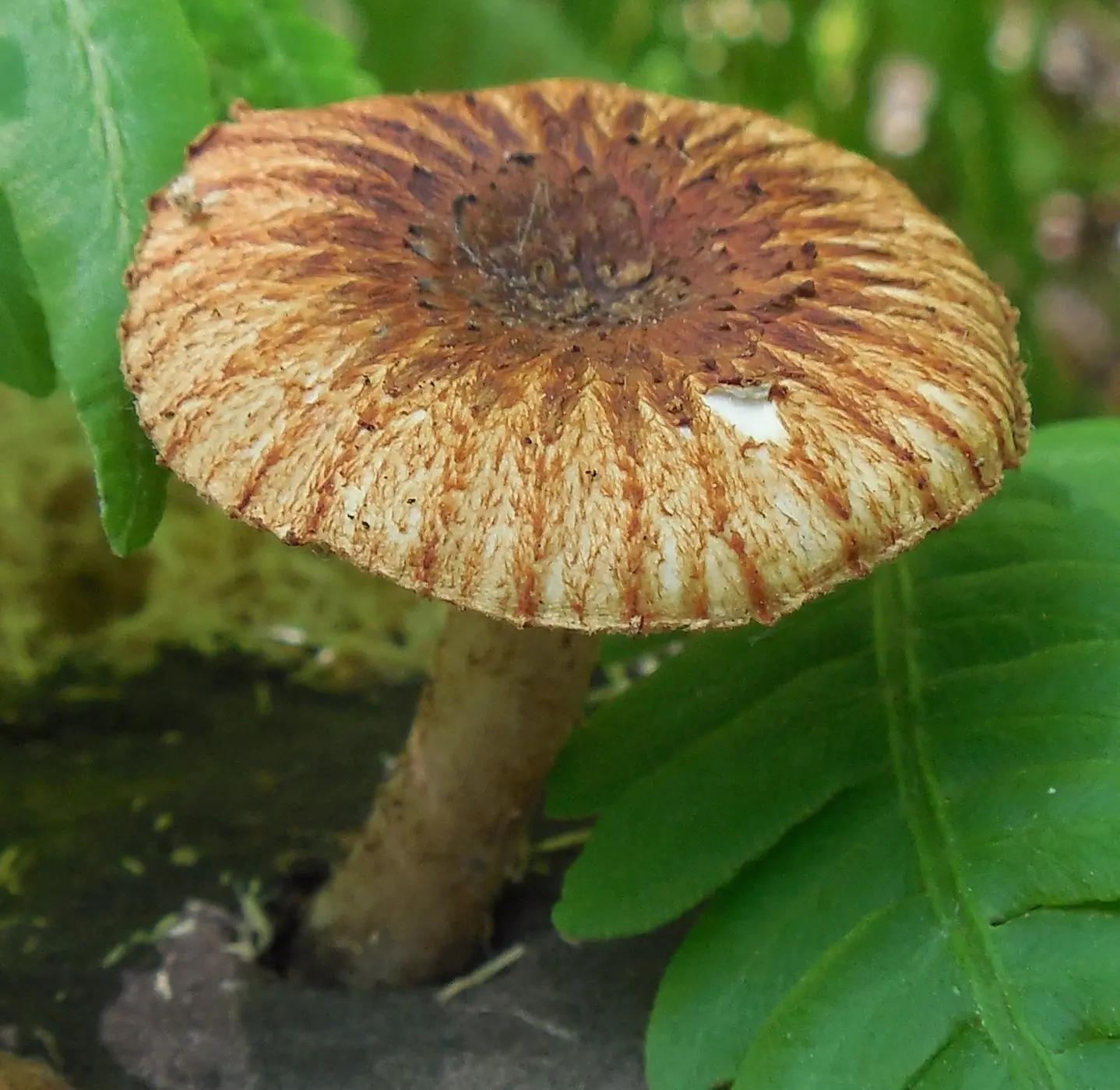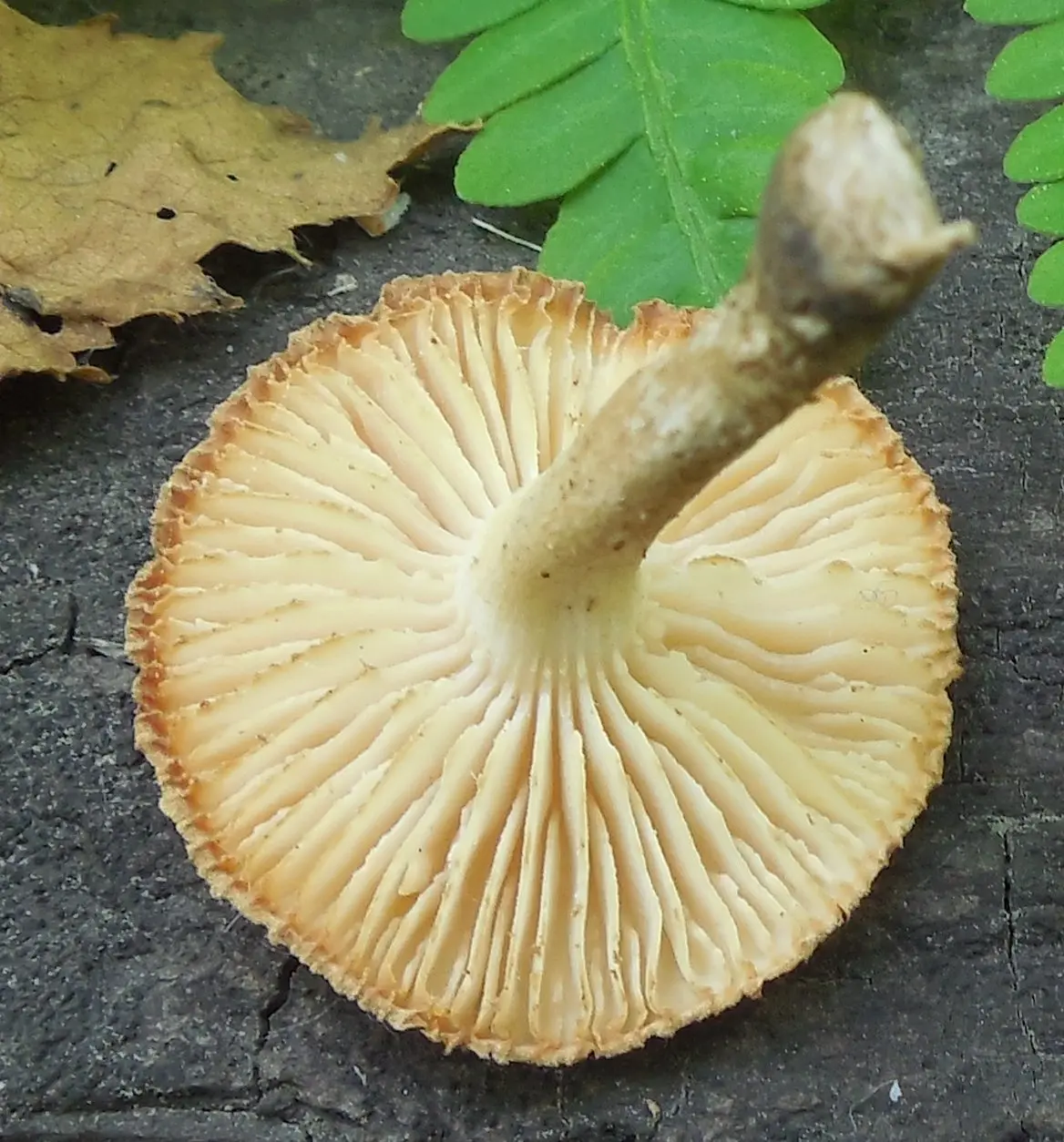Furrowed sawfly (Heliocybe sulcata)
- Division: Basidiomycota (Basidiomycetes)
- Subdivision: Agaricomycotina (Agaricomycetes)
- Class: Agaricomycetes (Agaricomycetes)
- Subclass: Incertae sedis (of uncertain position)
- Order: Polyporales (Polypore)
- Family: Polyporaceae (Polyporaceae)
- Genus: Heliocybe
- Type: Heliocybe sulcata (Striated sawfly)
- Lentinus furrowed
- pocillaria sulcata
- Pocillaria misercula
- Pleurotus sulcatus
- Neolentinus sulcatus
- Lentinus miserculus
- Lentinus pholiotoides
- The contribution was fulfilled

head: 1-4 centimeters in diameter, usually about two centimeters. There is information that under favorable conditions it can grow up to 4,5 cm in diameter. In youth, convex, hemispherical, then plano-convex, flat, depressed in the center with age. The color is orange, reddish, ocher, orange-brown, darker in the center. With age, the edge of the cap may fade to a yellowish, yellowish-whitish color, the middle remains darker, more contrasting. The surface of the cap is dry, slightly rough to the touch, covered with brown, dark brown scales, densely located in the center, less often towards the edges; pronounced radially striated, edge of the cap ribbed.
plates: adherent, frequent, white, with plates. In young mushrooms, they are even; with age, the edge becomes uneven, serrated, “sawtooth”.

Leg: 1-3 centimeters high and up to 0,5-0,6 cm thick, according to some sources, it can grow up to 6 centimeters and even, which seems incredible, up to 15. However, there is nothing “incredible” here: a fungus can grow from a crack into wood, and then the leg is strongly extended to bring the hat to the surface. Cylindrical, may be slightly thickened towards the base, rigid, dense, hollow with age. Whitish, off-white, lighter under the cap. To the base is covered with small brown scales.
Pulp: dense, hard. White, whitish, sometimes creamy, does not change color when damaged.
Smell and taste: not expressed.
spore powder: white.
Споры: 11-16 x 5-7 microns, smooth, non-amyloid, with cystids, bean-shaped.
Unknown.
The fungus grows on wood, both living and dead. Prefers hardwoods, especially aspen. There are also finds on conifers. It is noteworthy that the furrowed sawfly can grow both on dead dead wood and on processed wood. It can be found on poles, fences, hedges. Causes brown rot.
For different regions, different dates are indicated, sometimes the mushroom is marked as spring, May – mid-June, sometimes as summer, from June to September.
Distributed in Europe, Asia, North America, Africa. On the territory of Our Country, finds were noted in the Irkutsk region, in Buryatia, Krasnoyarsk and Zabaikalsky territories. In Kazakhstan in the Akmola region.
The furrowed sawfly is very rare. In many regions, this species is listed in the Red Book.
Externally, Heliocybe sulcata is so unusual that it is difficult to confuse it with any other species.
The pulp of the sawfly furrowed is not subject to rotting. The mushroom does not deteriorate, it can only dry out. Not a mushroom, but a mushroom picker’s dream! But, alas, you can’t experiment much with eating, the mushroom is too rare.
But the unkilled flesh is not the most remarkable thing about this mushroom. Much more interesting is his ability to recover. Dried fruiting bodies can recover and continue to grow with increasing humidity. Such is the peculiar adaptation to arid regions.
The name Heliocybe sulcata is fully consistent with its appearance: Helios – Helios, the god of the sun in Greece, sulcata from the Latin sulco – furrow, wrinkle. Look at his hat, that’s right, the sun with ray grooves.
Photo: Ilya.









